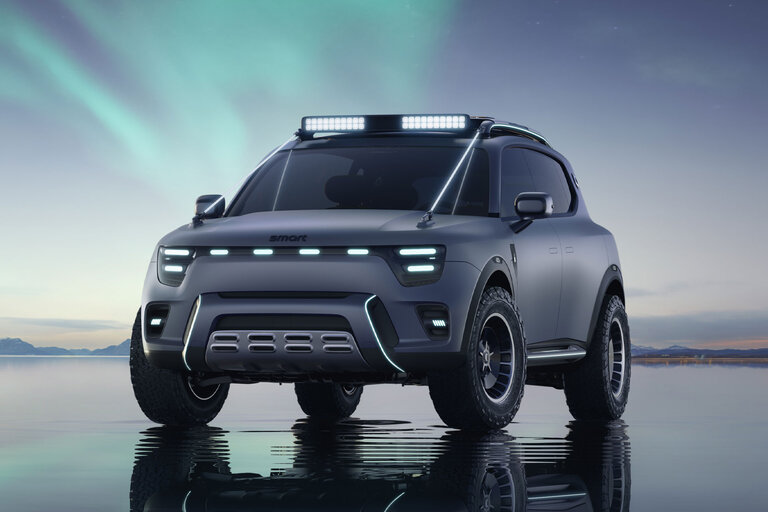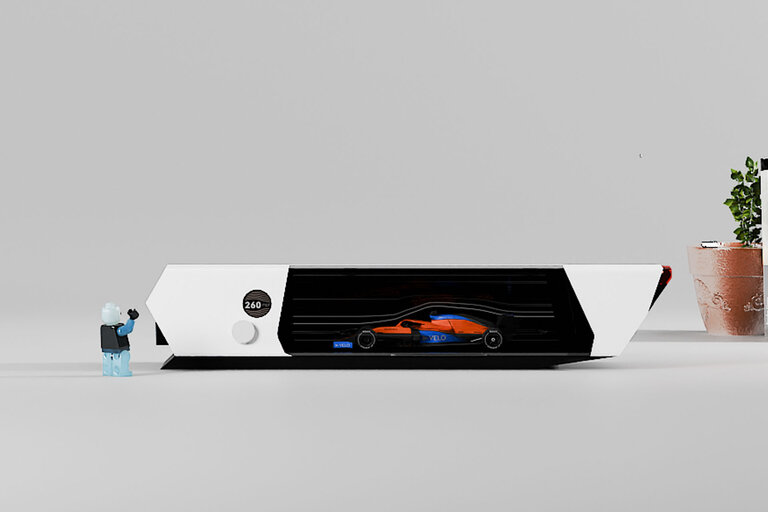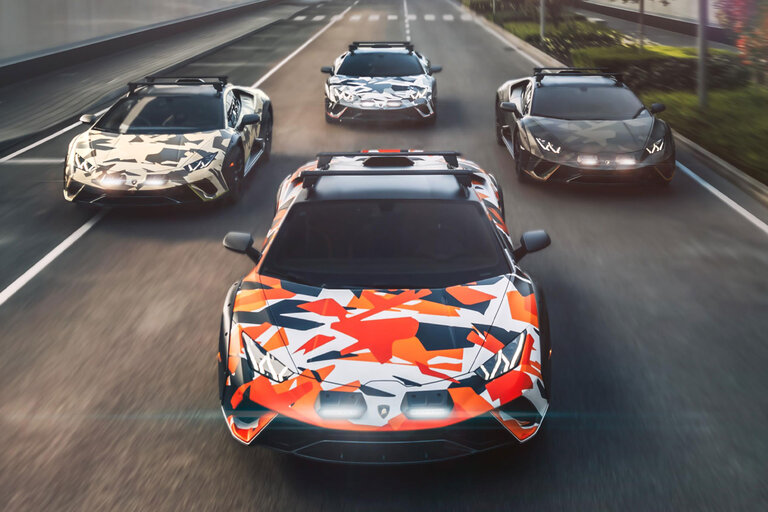
From the May 1989 issue of Car and Driver.
Some guys claim they can see the future, and I like to squint though the sights at it myself every so often. But this little adventure is going to be backward, sort of like going around to the muzzle end and peering up the barrel, trying to figure why we heard the bang and then nothing came out.
The old Chrysler Corporation was going to build cars with gas-turbine engines just as soon as…well, pretty damn soon. What started out—in the minds of a few engineers stimulated by World War II inventiveness—as a brainstorm that just might work became a drive-it-around prototype in October of 1953: Chrysler began testing a stock-bodied 1954 Plymouth powered by a turbine. As the decade went by, more and more turbine prototypes whirred out of the Chrysler Engineering Department and onto the streets of America, where they were captured on film and pictured in every newspaper, mechanics’ magazine, and car book in the country. General Motors and Ford had turbines, too, but Chrysler seemed to be out front, closest to the day when we’d all be whirring around in jet-age cars devoid of cooling systems, mufflers, pistons, valves, carburetors, and the need for gasoline. They’d run on kerosene or diesel fuel or, gee, even vodka if you were into party tricks. Chrysler publicists, at a press gala, went so far as to pour in a few precious ounces of fancy French perfume. All it did was give the exhaust that come-hither scent, according to the reviews.
This gas-turbine enthusiasm kept building on itself until, finally, the future began to lose its fuzziness. On May 14, 1963, at the Essex House hotel in New York City, Chrysler unveiled a turbine car that wasn’t a prototype. It was the first of a 50-car run of identical, shimmering-bronze Ghia-bodied glamour-cars that were going to be loaned to ordinary folks for driving to work or cruising the strip or whatever ordinary folks did with cars. The sole purpose was to determine the reaction of typical American drivers to turbine-powered vehicles, Chrysler said. Genuine market research, in other words, with the implication that if the folks out there panted hard enough and gave other indications of a willingness to sign checks, there might soon be turbines in every Chrysler dealership from sea to shining sea.
Of course that was then and this is now, and there are exactly zero high mileage used Chrysler Turbine Cars on the Honest Al’s lot in your neighborhood. The future, apparently, misfired. And at this late date, your author is being dispatched into the dark hole with instructions to report back.
We are walking down the corridor of the main building at the Chrysler proving grounds in Chelsea, Michigan. The buff-colored metal walls look as fresh and unmarked as I remember them being when I first set wing-tip in the place as a new-kid Chrysler engineer in—as coincidence would have it—the summer of 1963, just days after the Ghia Turbine Cars were announced.
We turn toward a sign, gold letters on a blue background, that says “Display Room.” The sight of it triggers a buzzer in my mind’s attic. I’d forgotten the Display Room. It was a space the size of a generous one-car garage, with steel walls and a set of industrial strength barn doors opening out into the main shop. The Display Room was for viewing the future. Any prototype so zoomy that it would stop work out in the general shop was wheeled into the Display Room. Cars so advanced that they couldn’t be outside without a cover were guided in. The steel doors were donged shut. The cover was pulled off. And there it was, behold and tremble, the future!
But as I said, today we’re looking down the other end of the barrel. The door opens and I step into 1963.
Am I just back from lunch or what? Nothing has changed. The walls are still buff, the workbenches gray, the tool boxes red. And the Turbine Car is still perfectly glamorous, its thrusting shape all decked out in jewelry-glitter chrome and sequin-shimmer bronze, like some showgirl at the Copacabana. I feel that I should whistle.
Like showgirls everywhere, this one looks a little used when you get up close. She’s got tiny wrinkles on her flanks from doors flung against her in parking lots. But she still knows how to strike a pose.
I saw many Turbine Cars in my Chrysler days, whirring around the Engineering complex like taxiing Boeings, trailing a warm cloud of jet breath that swirled around my ankles as they passed. Despite their numbers though, they were always mystery ships. It was hard to snag one for a joy ride: I never managed. The guys who worked in the turbine lab were aloof. Some of my friends transferred in there when the program was booming. It was as if they’d joined a cult. They never made small talk at the coffee machine after that, and they never returned to the old cafeteria tables for lunch. Rumors of special high-temperature materials and efficiency breakthroughs drifted over the Engineering grapevine, but I never heard a turbine guy say a word. I don’t recall ever seeing one smile, either.
I ask George Stecher about that. He’s one of the original cast, you might say: 39 years at Chrysler, worked on turbines right to the end of the program, still carries the fire for them. He came out to Chelsea this morning to mother the Turbine Car through this adventure.
About the cult, he says simply, “George Huebner had a way of inspiring his men.”
Yes, George Huebner, I remember him striding through the halls: tall, stiff as a general, Germanic in his white hair and steel-rimmed glasses, all sharp creases and crisp collar-the million-dollar man. The turbine project was his deal. He looked impossible to argue with.
Stecher plays back the details of Chrysler’ s turbine days as if they had happened earlier in the week. Altogether, he says, there were 55 of these Ghia-built cars—45 of them went into service as loaners to selected “customers.” From October 29, 1963, when the first car went out, until January 28, 1966, when the last one was returned, 203 motorists were given a three-month trial.
The cars were styled at Chrysler under Elwood P. Engel, who then was just fresh from Ford. In silhouette, the Turbine Cars looked like the Thunderbirds of the time. That’s probably the way Engel thought a four-seater should look. The bodies were handmade in Italy and fitted with engines and chassis at Chrysler’s Greenfield plant.
“There are nine left in the world,” Stecher says. “Chrysler has three.”
The 1960s-vintage scuttlebutt said the cars were brought in duty-free for a limited time and would ultimately be scrapped to avoid the duty. Not long ago I heard rumors of a big Turbine Car boneyard on some remote section of the proving grounds. Stecher confirms the hearsay. The only escape from the tax was to send them back to Italy or give them to museums in non-running condition. Six cars went to museums with their engines removed and mounted on display stands. But museum collections are not forever, it seems, and now a few Turbine Cars are winding up in private hands. By a quirk of the tax rules, after five years of display time the cars are exempt from the duty forevermore. The Domino’s Pizza man, Tom Monaghan, recently acquired a Turbine Car for his collection, although someone beat him to the engine.
What about the boneyard? Elmer Kiel, the proving grounds’ facilities coordinator, nods. “We cut ’em up, smashed ’em up, burned them up. I cried, but we had to do it.”
He laughs about another aspect of the disposal job, though. When the time for destruction was near, proving-grounds staffers started helping themselves to a few keepsakes. A favorite was the chrome centerpiece from the wheel covers. It was pure Turbine motif, a dish-shaped thing with internal fins. It made a great ashtray, and a number of smokers had them on their desks. Then one day, with no warning, they all disappeared. Nobody knew why. U.S. Customs, maybe?
Nope. The nighttime janitorial crew found internally finned ashtrays a nuisance to clean, so they executed a little disposal operation of their own.
I ask Stecher why turbines never made it into production. He says that big improvements came fast in the early days, and optimism was everywhere. But as the state of the art approached an acceptable level for passenger cars, progress began to drag. For a while, NOx emissions were formidable. When that barrier was finally surmounted, the energy crunch hit. Fuel economy was always a turbine shortcoming, but fifteen years of development had pushed it up to a rough sort of parity with the big V-8 cars of the time—17 or 18 mpg on a trip, somewhere in there. But when crisis-spooked car buyers began turning to 30- and 40-mpg imports, turbine optimism went limp. In the mid 1970s, Chrysler won a $6.4 million government contract for turbine development. There was even a compact, front-drive turbine in the modeling stage as the 1980s dawned. But from a turbine engineer’s standpoint, the future looked awful. The turbine can be a highly efficient engine in constant-speed operation, as in an airplane or a generating station, but it’s a guzzler in stop-and-go driving. The original attraction for cars was perfect smoothness and—let’s face it—novelty. But the one scenario not foreseen in those growth-crazy postwar years was exactly the one that was coming to pass. Fuel was going to be limited. Chrysler finally resigned itself to that outlook in April 1981 and turned off the Turbine Lab’s lights for the last time.
I recall the Turbine Car’s whirring sound well enough, but there are many shades of whir. On the scale of Boeings to Cuisinarts, I wouldn’t have remembered exactly where it fit. But now with the ignition on and the blades spinning up to speed, I hear an air rush that’s pure Electrolux. Bring on the carpet.
The tach needle requires maybe three seconds to swing up to idle—at 22,000 rpm. The whir is shrill and airy, altogether wrong for a car. And altogether perfect for fantasy voyages.
For sure, the interior is fantastic. Three deeply tunneled dials, clustered like cannons, point at me through a hooded opening in the dash. Bronze leather conforms to every surface that’s not chrome. The bright turbine-motif console extends from firewall to trunk, bisecting the cockpit. The radio face has two Civil Defense symbols, each one a triangle within a circle, showing where to tune when the commies drop the big one. The tach reads to 60,000 rpm.
Stecher is nervous about the engine. He says the turbine inlet temperature is high by about 75 degrees. My idea of a full-power takeoff blast into the hazy proving-grounds distance doesn’t amuse him in the slightest. So we’re going to have to cruise.
My brain has been called into a heavy mediating session between the eyes, which say “car,” and the ears, which insist “Boeing.” The ears know about jets, know how the engine whistles up and then pretty soon the speed picks up. The Turbine Car does that, as if the engine weren’t connected to the driving wheels. Cruise amounts to ooze. I press the go pedal, and we ooze forward. The tach needle jumps up by thousands of rpm; the speedo seems sedated.
Turbine Car ooze, slippery as pure polyester. That was the mystique. Vibrationless for sure. But off-putting, too, because it’s so disconnected from the job of forward motion—like an old Hydramatic, only more so.
Forget what you know about cars. The turbine is a two-part engine. The whistling part is the compressor section, which runs all the time, revving up and down in response to fuel flow regulated by your foot. The compressor’s job is to supply hot wind to the power turbine, which is joined to the transmission. There’s no connection between the compressor and the power turbine except the hot wind. Stop at a traffic light and the power turbine stops, too, hot wind idling through the blades, waiting for you to release the brakes and fuel up a blast.
The engine serves as its own torque converter, in effect—an exceptionally loose one, I must add. And that’s the source of the disconnected feeling. Chrysler used a three-speed automatic, minus the usual converter, to pep up around-town operation.
Stecher has just now noticed that this one is not shifting. No wonder the car oozes. There aren’t many Turbine Car parts left. His face shows an owner’s frustration: “Oh no! Now what?”
Ah, but we don’t need a transmission to cruise. Besides, who needs a transmission on a jet? The engine sound is absolutely convincing. You know how in a Boeing the jet whir seems to fade into happy harmony with the outside-air rush at cruising speed? As we approach Mach 0.1 the Turbine Car does exactly the same thing.
My voice drops to a gravelly drawl and I feel the urge to say, “This is your captain speaking.”
This content is created and maintained by a third party, and imported onto this page to help users provide their email addresses. You may be able to find more information about this and similar content at piano.io
Source link





